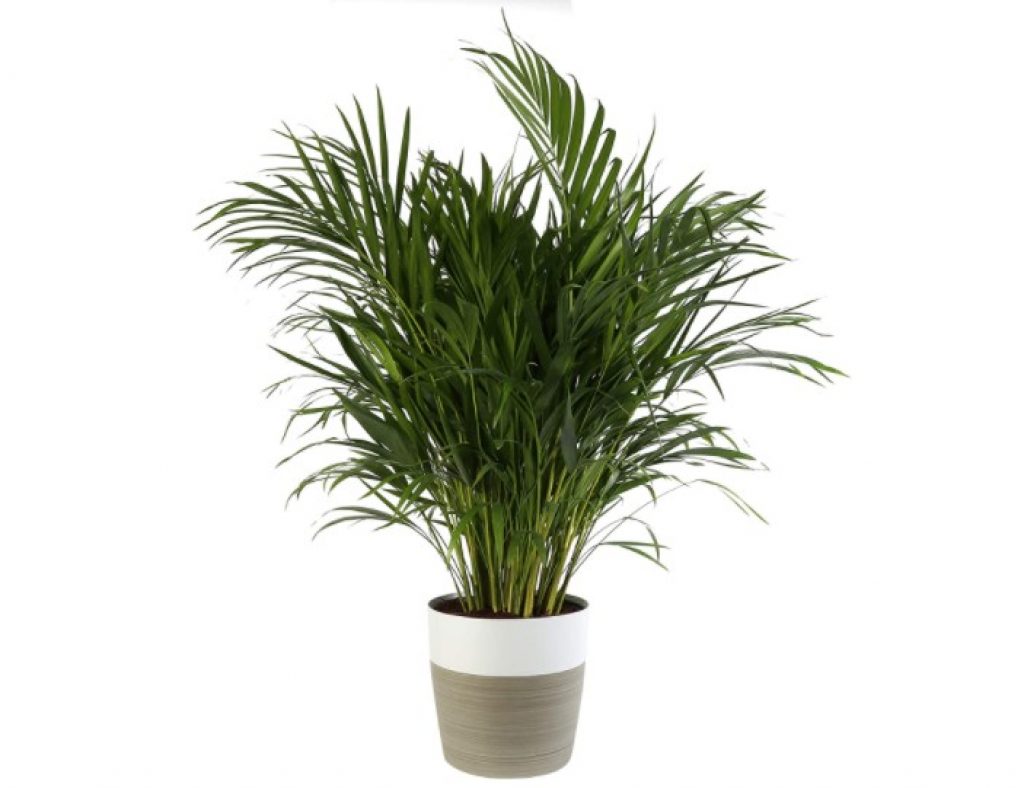Butterfly palms or Dypsis lutescens are flowering plant species in the family Arecaceae (commonly known as palms) native to Madagascar but naturalized in several countries grown as ornamental gardens in tropics and a houseplant in subtropics.
While they work well as houseplants, it is good to point out that they grow very tall, up to 20 meters, and their leaves can be up to 1.5 meters long and their pinnate leaves make them quite alluring their golden trunks will remind you of bamboo culms. However, it doesn’t grow fast.

Are they safe?
Butterfly palms, also known as areca, yellow palms, golden feather palm, or golden cane palms, are safe to cats, i.e., they are non-poisonous only to cats but also dogs and horses. This makes make one of the best choices of house and garden ornamentals.
They join other ornamental palms like parlor (Chamaedorea elegans), ponytail (Beaucarnea recurvata), majesty (Ravenea rivularis), bamboo palms (Chamaedorea seifrizii), cat palms (Dypsis lutescens), kentia (Howea belmoreana), Livistona chinensis, and Pygmy date palm (Phoenix roebelenii) that are also safe to cats and dogs.
We know cats are not herbivores, i.e., they are obligate carnivores that don’t need plants in their diet to thrive. However, besides playing with areca palms fronds, they may nibble and eat a little bit. Don’t worry. This is a normal behavior unless it is excessive, as it may be a sign of boredom or nutritional deficiencies.
Growing and care
Since areca palms are cat-friendly, it is good we give you a few growing tips as well as the care they need. These growth tips will help you know if they are the right kind of garden or even house plants you want to have. Some growing and care requirement include:
- Humidity: As tropical plants, they need high humidity, with ideal ones between 45 and 65 percent. If you live in drier places, you may need a humidifier or employ other ways to keep humidity at this range.
- Temperature: These plants thrive in regions with high temperatures, with ideal ones being 65°F and 75°F (16°C – 24°C). If you live in a temperate climatic conditions, consider keeping them indoors. During summers, you can get them out. However, don’t let the temperatures go below 50°F.
- Lighting: If growing them outdoor, they thrive best in a place with filtered light or under a shade. Indoors, they also need plenty of light but no too much bright light.
- Soil: They need well-drained soils. If you are growing them in pots, peat-based grow media will be perfect,
- Watering: Like most palms, they need moist soil and not a soggy one. Therefore, avoid overwatering them and go for rainwater or distilled water since they can’t tolerate fluorine in water.
- Fertilizers: They don’t need much fertilizer. Please give them a very weak liquid fertilizer during their growing seasons. You can give them once or twice and avoid winters.
Alternative plants
You have a hint of what caring for your butterfly palms will involve. Is this something you can manage or not? If not, don’t give up. There are many other cat-friendly houseplants you can grow that include:
- Christmas cactus
- Aluminum plant
- Boston ferns
- Echeveria glauca
- Friendship plants
- Ghost plants
- Rattlesnake plant and other calatheas
- Polka dot plant
- Lipstick plant
- Pheasant plant
